Best Winter Lettuce Varieties to Plant in July UK: Complete Growing Guide
Discover the best winter lettuce varieties to plant in July for continuous harvests through autumn and winter. Expert advice on hardy varieties, sowing techniques, and protection methods for UK gardeners.
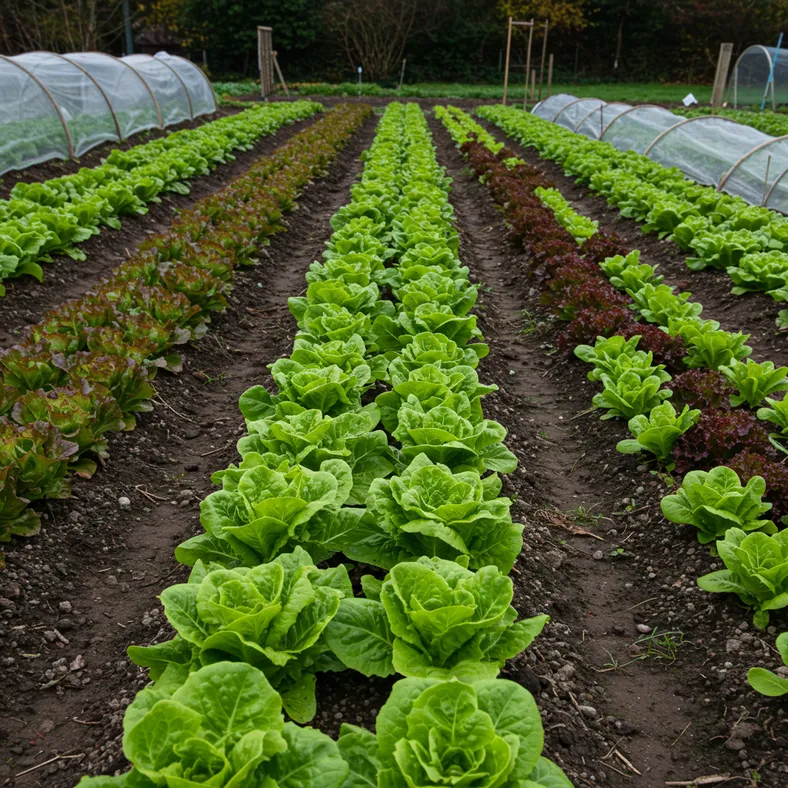
While most gardeners think of lettuce as a summer crop, July is actually the perfect time to sow winter lettuce varieties for harvests that will last well into spring. These hardy varieties thrive in cooler conditions and provide fresh, crisp leaves when shop-bought salads are at their most expensive and least flavourful.
Winter lettuces offer superior taste and texture compared to their summer counterparts, as the cooler temperatures concentrate flavours and create that perfect crisp bite. By choosing the right varieties and following proven growing techniques, you can enjoy homegrown salads throughout the darker months.
Why Plant Winter Lettuce in July
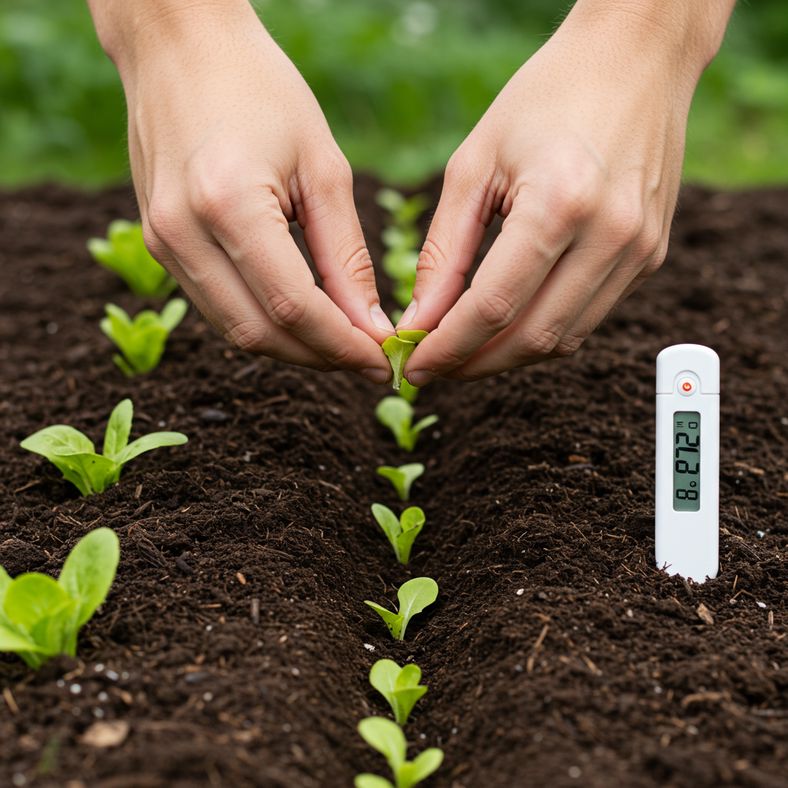
July marks the ideal window for sowing winter lettuce varieties in the UK. Unlike summer lettuces that bolt quickly in heat, winter varieties are specifically bred to withstand cooler temperatures and shorter daylight hours.
The timing is crucial because lettuce seeds struggle to germinate in temperatures above 25°C. By sowing in July, you catch the sweet spot where temperatures are cooling but there's still enough warmth for reliable germination. This gives plants time to establish strong root systems before the harsh winter weather arrives.
Winter lettuces sown in July will provide harvests from October through to April, offering exceptional value and ensuring your family has access to fresh, nutritious salads throughout the most challenging growing season.
- Seeds germinate reliably in cooling July temperatures
- Plants establish strong root systems before winter
- Harvests available from October through April
- Better flavour development in cooler conditions
- Significant cost savings compared to shop-bought winter salads
Top Winter Lettuce Varieties for UK Gardens
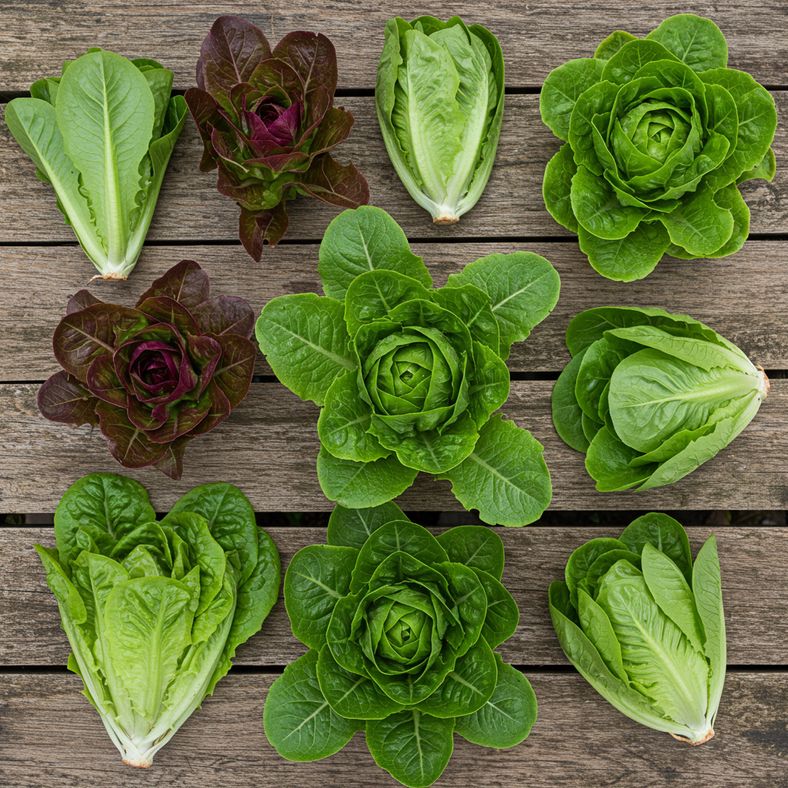
Selecting the right varieties is essential for winter success. These hardy cultivars have been specifically developed to tolerate frost, shorter days, and challenging growing conditions while maintaining excellent flavour and texture.
Winter Density stands out as the champion of winter lettuces. This cos variety forms compact, dense hearts with exceptional cold tolerance, surviving temperatures down to -10°C with minimal protection. The leaves remain sweet and crisp even in the depths of winter.
All Year Round lives up to its name, producing reliable harvests in all seasons. This butterhead variety forms loose hearts with soft, succulent leaves that have a mild, pleasant flavour. It's particularly good for beginners as it's very forgiving.
Arctic King is an outstanding butterhead variety specifically bred for winter growing. It forms good-sized hearts with excellent cold resistance and maintains quality throughout the winter months.
Valdor offers exceptional hardiness and forms attractive, compact hearts. This variety is particularly good for exposed sites and consistently produces quality leaves even in harsh conditions.
For those seeking something special, Little Gem lettuce seeds provide compact, sweet hearts perfect for small gardens or container growing.
Sowing Winter Lettuce Seeds
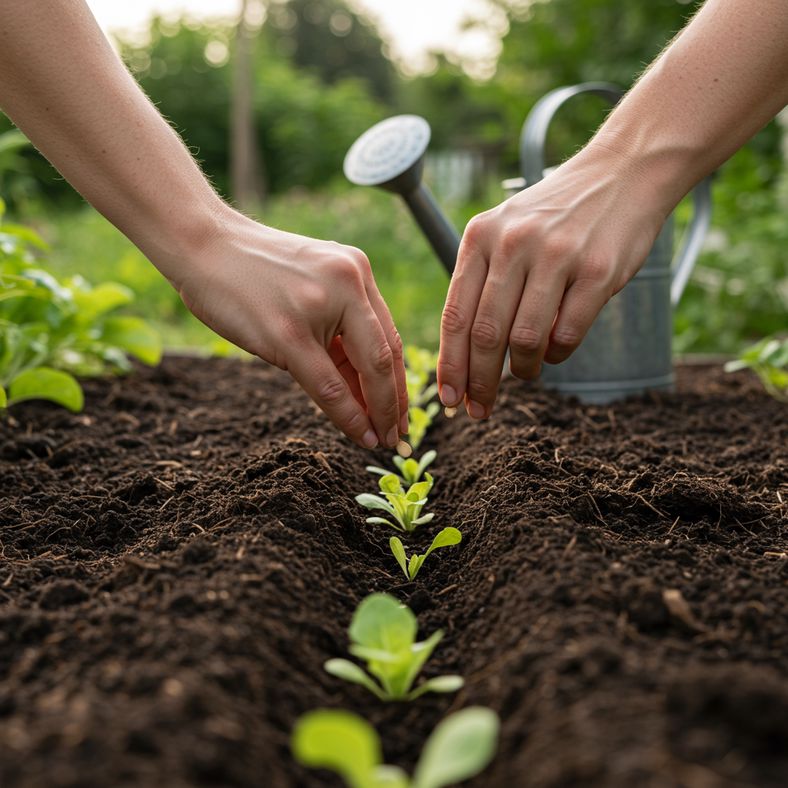
Successful winter lettuce starts with proper sowing technique. The key is creating the right conditions for germination while preparing plants for the challenges ahead.
Sow seeds from mid-July through August, using the 'little and often' approach. Rather than sowing all at once, make weekly sowings to ensure continuous harvests and reduce the risk of total crop failure.
Create shallow drills about 1cm deep and 30cm apart. The soil should be moist but not waterlogged - winter lettuces are particularly susceptible to root rot in soggy conditions. Sow seeds thinly to reduce competition and make thinning easier.
For container growing, use large pots at least 30cm wide filled with quality peat-free compost. This allows better drainage control and makes it easier to protect plants during harsh weather.
Water gently after sowing and keep soil consistently moist throughout germination. In hot July weather, consider sowing in the evening when temperatures are cooler, or provide temporary shade during the hottest part of the day.
Thinning and Transplanting
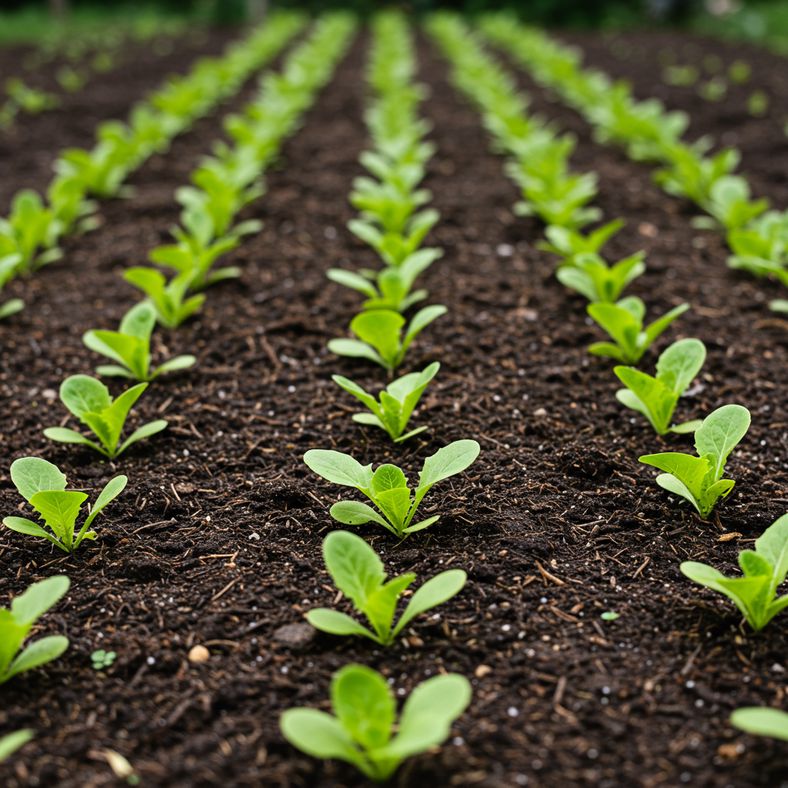
Proper thinning is crucial for winter lettuce success. Overcrowded plants compete for nutrients and light, resulting in weak growth that won't survive winter conditions.
Begin thinning when seedlings have their first true leaves, typically 2-3 weeks after sowing. For hearting varieties like Winter Density, thin to 15-20cm apart. Loose-leaf varieties can be spaced closer at 10-15cm intervals.
Don't waste the thinned seedlings - they make excellent micro-greens for salads. Harvest them when they're 5-7cm tall for a sweet, tender addition to your dishes.
If you've started seeds indoors or in a greenhouse, transplant them outside once they have 4-6 true leaves. Harden off gradually over a week, increasing outdoor exposure daily. This prevents transplant shock and ensures strong establishment.
Choose a sheltered, sunny spot protected from strong winds. Winter lettuces need all the available light they can get as days shorten, so avoid shaded areas.
Protecting Winter Lettuce from Harsh Weather
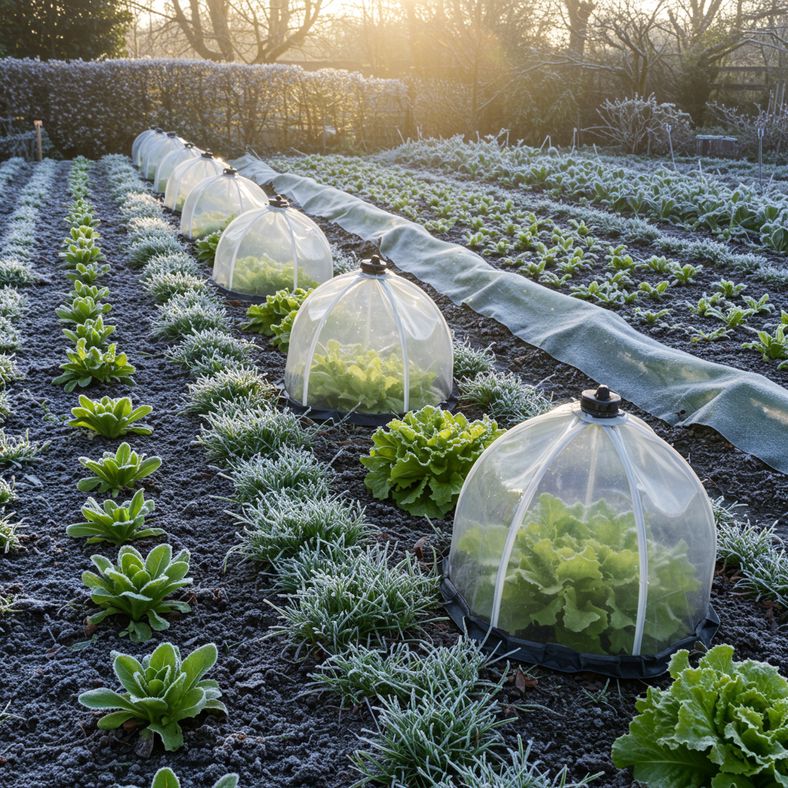
Protection is the key to successful winter lettuce growing. While these varieties are hardy, they still benefit from shelter during the worst weather.
Cloches are invaluable for winter lettuce growing. Install them in late September or early October, before the first frosts arrive. Choose clear materials that allow maximum light penetration - light levels are already limited in winter.
Horticultural fleece provides excellent protection from wind and frost while allowing air circulation. It's particularly useful for covering larger areas and can be supported on hoops to prevent direct contact with plants.
In exposed gardens, consider creating windbreaks using temporary barriers or planting hardy shrubs nearby. Cold, drying winds are often more damaging than frost itself.
For ultimate protection, grow winter lettuces in a cold greenhouse or polytunnel. Even unheated structures provide valuable protection from rain and wind while extending the growing season significantly.
During severe weather, add extra layers of protection. Newspaper or cardboard can provide temporary insulation during the coldest nights, but remember to remove it during the day to prevent overheating.
Winter Care and Maintenance

Winter lettuce care differs significantly from summer varieties. The slower growth rate and challenging conditions require a more considered approach.
Watering needs are dramatically reduced in winter. Check soil moisture by inserting your finger 2-3cm deep - only water if the soil feels dry. Overwatering in cold conditions leads to root rot and fungal diseases.
Remove any damaged or yellowing leaves promptly. In the humid conditions under protection, these can quickly develop grey mould that spreads to healthy plants.
Weeding remains important even in winter. Weeds compete for limited light and nutrients, and can harbour pests and diseases. Hand-weed carefully to avoid disturbing shallow lettuce roots.
Ventilation is crucial when using protection. On milder days, open cloches or lift fleece to prevent overheating and maintain air circulation. This reduces disease risk and prevents plants from becoming too soft.
Monitor for pests regularly. Aphids can be particularly problematic in protected environments. Use biological controls or insecticidal soap if necessary.
For harvesting tools, quality garden secateurs ensure clean cuts that heal quickly and reduce disease risk.
Harvesting Winter Lettuce
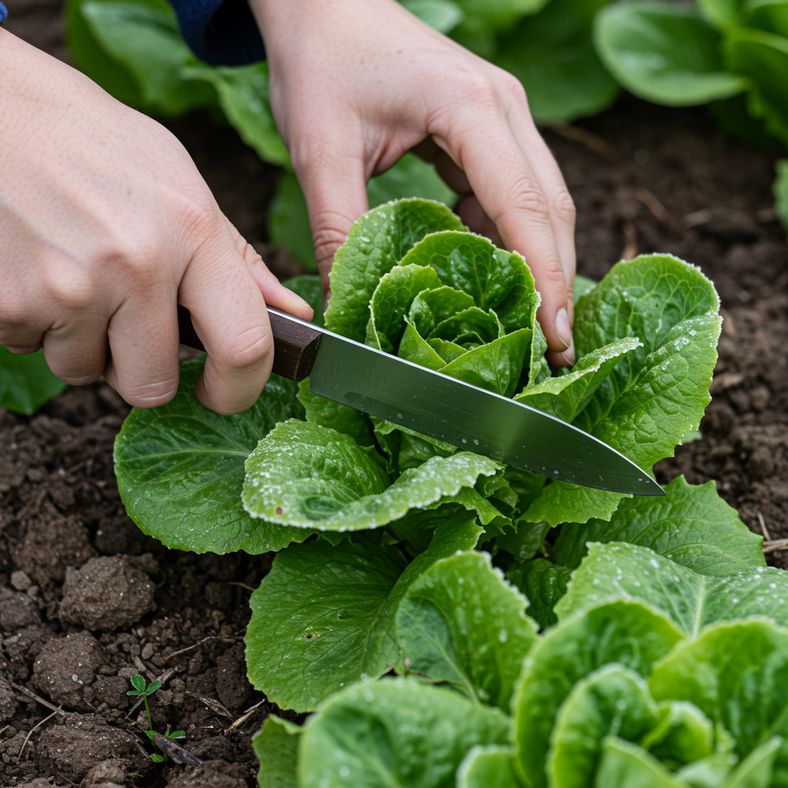
Winter lettuce harvesting requires timing and technique. The slow growth means you need to be patient, but the reward is exceptional flavour and texture.
Begin harvesting when hearts feel firm and leaves are well-developed, typically 10-14 weeks after sowing. Don't wait too long - even winter varieties will eventually bolt if left too long.
Harvest in the morning when leaves are crisp and full of moisture. In freezing weather, wait until frost has melted to avoid damaging brittle leaves.
For hearting varieties, cut the entire plant about 2.5cm above soil level. The remaining stump often produces a second, smaller crop of leaves - particularly valuable in late winter when fresh produce is scarce.
Loose-leaf varieties can be harvested as cut-and-come-again crops. Take outer leaves first, allowing the centre to continue growing. This method extends the harvest period significantly.
Store harvested lettuce in the refrigerator wrapped in damp paper towels. Winter lettuces typically keep better than summer varieties due to their firmer texture and higher water content.
Common Problems and Solutions
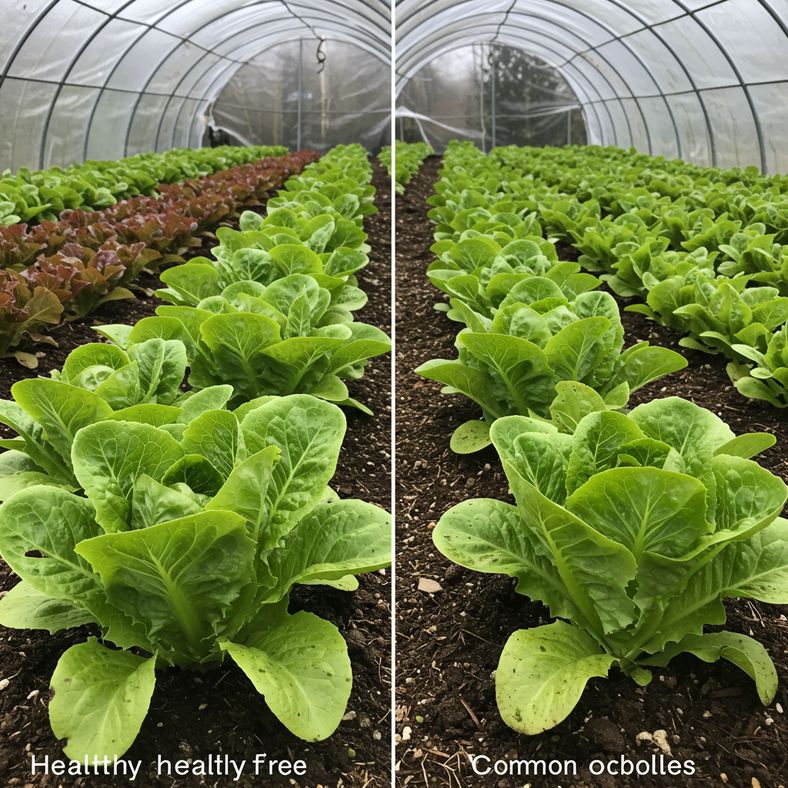
Winter lettuce growing presents unique challenges, but most problems can be prevented with proper care and attention.
Slug and snail damage remains a concern even in winter. These pests are active during mild spells and can cause significant damage to young plants. Use copper tape around containers or create barriers using crushed eggshells. Beer traps are effective but need regular maintenance.
Grey mould (Botrytis) thrives in the humid conditions under protection. Prevent by ensuring good ventilation, removing damaged leaves promptly, and avoiding overhead watering. Space plants adequately to improve air circulation.
Aphid infestations can build up quickly in protected environments. Monitor regularly and use biological controls like ladybirds or insecticidal soap. Avoid broad-spectrum pesticides that harm beneficial insects.
Bolting can occur during mild winter spells or early spring. Choose bolt-resistant varieties and ensure consistent growing conditions. Harvest promptly when plants are ready.
Root rot develops in waterlogged conditions. Improve drainage by adding grit to heavy soils or growing in raised beds. Reduce watering frequency in winter.
Wind damage can be severe on exposed sites. Install windbreaks or use protective structures. Stake tall varieties if necessary.
Extending the Season Further
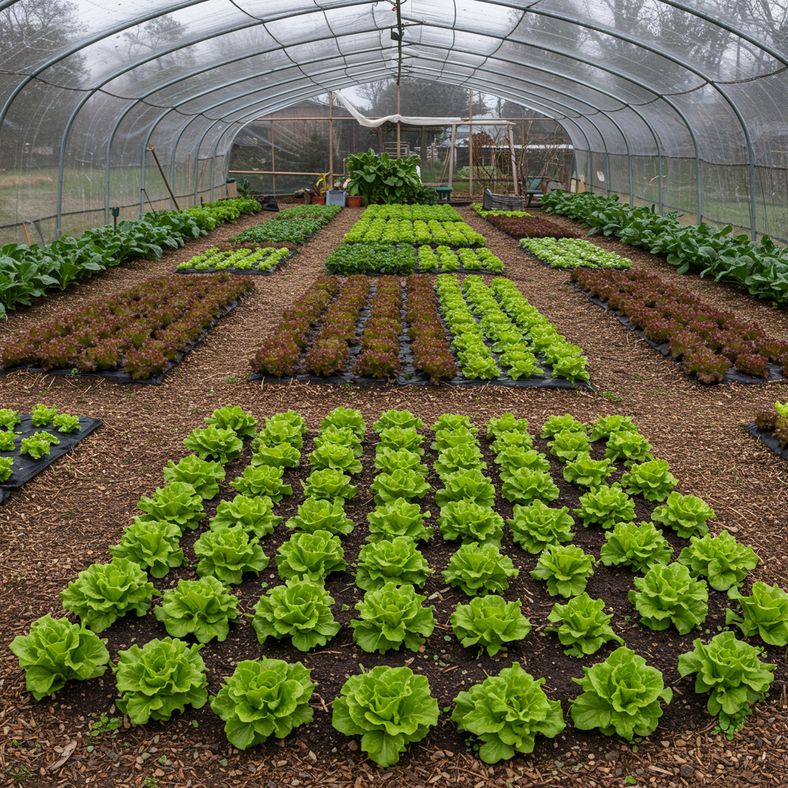
With careful planning and the right techniques, you can enjoy fresh lettuce almost year-round, even in the challenging UK climate.
Successional sowing is key to continuous harvests. Make small sowings every two weeks from July through September. This spreads the harvest period and reduces the risk of losing entire crops to adverse weather.
Consider growing different varieties with varying maturity dates. Combine quick-growing loose-leaf types with slower hearting varieties for extended harvests from each sowing.
Cold frames and mini-tunnels create beneficial microclimates. Even a simple structure can raise temperatures by 5-10°C, extending the growing season significantly.
In milder regions, try sowing hardy varieties like Winter Density as late as October for spring harvests. These late sowings remain small through winter but grow rapidly as days lengthen.
Complement your winter lettuce with other cold-hardy salad crops like winter purslane, land cress, and corn salad. These create diverse, interesting salads throughout the winter months.
Keep detailed records of sowing dates, varieties, and harvest times. This information becomes invaluable for planning future seasons and optimizing your growing schedule.